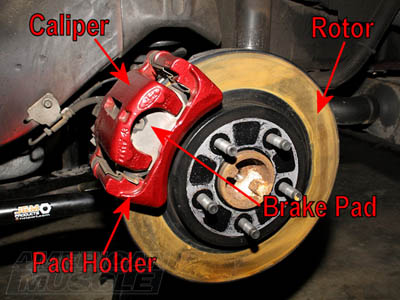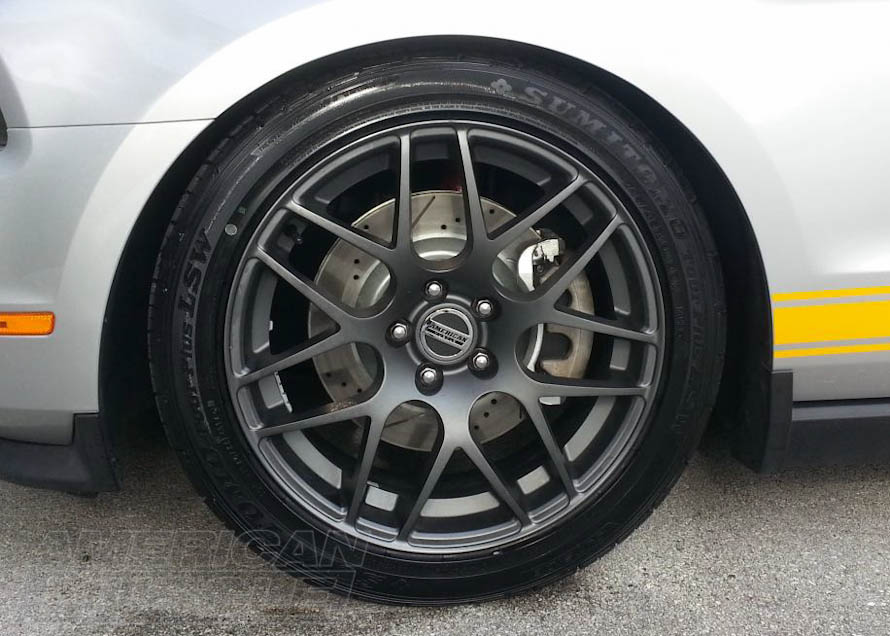The braking system of a Mustang is one of the most lacking areas of the car, yet often neglected when it comes to potential upgrades. Braking improvements don’t offer the thrills of a high performance modification, or the serious eye candy of an appearance improvement, but they're one of the most important systems on your Mustang.
Contents
- Brake System Overview
- What are Your Mustang's Commonly Replaced Components?
- Replacing your Mustang's Disc Brake Rotor and Caliper
- Other Components You Might See
- About Stock Brake Pads
- Popular Brake Upgrade Options and Choices
- Top 3 Brake Pad and Rotor Kits for 2010-2014 GT Mustangs
- Conversion Kits
- Brake Lines & Fittings
- Rotors
- Further Cooling and Drag Racing
- How Does My Mustang's E-Brake Work?
- Caliper Paint/Covers
- Brake Clearance Issues With Mustang Wheels
- What Causes Brake Fade?
- Increasing Thermal Capacity
- What Type of Brake Fluid Do I Need & How Much?
- Reducing Brake Fade By Upgrading Your Mustang's Rotors
- Increasing Your Mustang's Brake Cooling
- What Is Best for Me?
- Brake Bedding Procedure
- How to Replace Mustang E-Brake Pads
Shop Mustang Brakes
Brakes are possibly the most vital component on your Mustang and, sadly, one of the areas in the greatest need of upgrading from stock form. Ensure you and your car's safety by choosing premium aftermarket brake parts from the leading manufacturers.



















